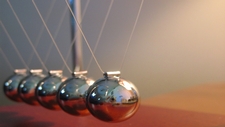Science Questions and Hypotheses

TEKS Objective
Ask well-defined questions, formulate testable hypotheses, and select and use appropriate equipment and technology.
Essential Understanding
The student uses scientific methods during laboratory and outdoor investigations.
Science Background
Information about the Process of Scientific Inquiry: National Institutes of Health (website) - Learn about the different ways scientists study the world and how inquiry can be incorporated into science instruction.
What is Inquiry Science Teaching? BioEd Online (video) - Strategies for using questions and investigations to guide your students’ science learning.
What is Inquiry Science Teaching?
BioEd Online, www.bioedonline.org
Signature Lesson
Working with Questions: National Institutes of Health (website) - This lesson from the Doing Science: The Process of Inquiry unit helps students to formulate and ask well-defined, testable questions.
- Supporting Lessons
- Extensions
- Assessment Ideas
- Literature Connections
- Related
TEKS - Additional Resources
Supporting Lessons
How Much Sugar is in Bubble Gum? TeachEngineering (website) - During this simple experiment—to determine whether sugarless gum loses as much mass after chewing as regular gum does—students learn the importance of experimental variables and controls, formulate hypotheses, and design and execute new experiments, including the selection of appropriate equipment, based on their own well-defined questions. This lesson includes teacher background, assessments and extensions.
How Much Sugar is in Bubble Gum?
TeachEngineering, www.teachengineering.org
How Many Drops? TeachEngineering (website) - Conduct a simple investigation to determine how many drops of water, rubbing alcohol, and vegetable oil can be placed on a penny before spilling over. Students formulate hypotheses to explain their observations about the behavior of each liquid, and develop ways to test those hypotheses.
Elaboration Lessons and Extensions
Design a Cell Phone: EdHeads (video) - Help engineering director Elena design and manufacture a cell phone to help senior citizens get the most out of new technology.
Design a Cell Phone
EdHeads, www.edheads.org
How to Build a Swinger: FOSSWEB (PDF) - Explore how a pendulum’s movement can be altered by changing a variable. Use No. 3-7 reproducible sheets.
Assessment Ideas
Rubrics for Assessment: University of Wisconsin, Stout (website) - Sample science rubrics for formative elementary assessments.
Rubrics for Assessment
University of Wisconsin, Stout, School of Education, www.uwstout.edu/soe
Rubistar, Create a Rubric: 4Teachers.org (website) - Simple-to-use templates that will help you create rubrics for project-based learning activities in many subjects.
Literature Connections
Solving Science Questions: A Book About the Scientific Process. Chappell, Rachel M. (ISBN-13: 978-1600445422)
Additional Resources
Doing Science: National Institutes of Health (website) - Five lessons that teach students about the nature of science and inquiry.
Eggs-Periments, Bottled Egg: National Geographic Kids (website) - Simple experiment that provides opportunities for students to form testable hypotheses, use appropriate equipment and technology, and investigate the influence of variables. Includes links to additional activities.
Eggs-Periments, Bottled Egg
National Geographic Kids, kids.nationalgeographic.com
TEKS Navigation
Grade 5
Need Assistance?
If you need help or have a question please use the links below to help resolve your problem.

Comments